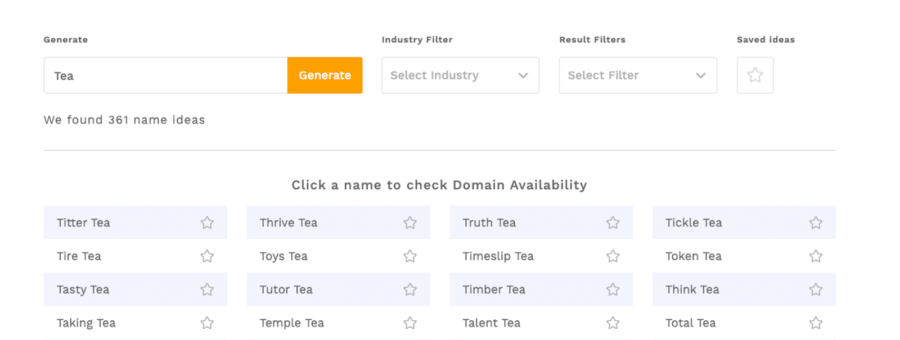Do you have an exact idea what the unique look, feel and style of your blog is? If not, you could be missing out on a great opportunity to enhance your online presence, attract more traffic and keep your readers interested. Whether you are blogging for personal or professional reasons, it is crucial to build your blog’s style or: your brand.
Branding is a process when you create specific rules and guides to shape your reader’s and customer’s perception about, well, the look and feel of your brand. This can include choosing specific colors that will represent your content, using themed images, and even your writing style. All this helps you create a singular brand and memorable personality for your blog. It will make you unique in the eyes of your readers and set you apart from the competition.
If you are looking for tips on how to brand your blog, then you have come to the right place.
Here are 5 of them that have been tried and tested and will help you find and create your own brand.
1. Pick a Great Blogging Platform and Name
When choosing a platform it’s a good idea to see where the users and other bloggers already are. You can use a blogging platform like medium or bloglovin and create an account there or you can choose to set up your blog on your very own website.
The perfect way to do that is using a content management system, or CMS. If we look at the market shares of best CMS to use for blogging, the biggest names are WordPress, Wix, and Squarespace. Choosing a popular platform means that you will find help faster and usually these platforms are updated more frequently. Choosing a CMS like WordPress to set up your blog will give you a lot of design options to easily create a unique look for your blog without having any IT knowledge.
The next step to your brand is picking a name. Nothing can leave a more lasting impression on your blog than picking a great blog name. While coming up with one is not easy, it is something that is the first step to creating the brand for your blog. Your blog name will be the thing that users encounter the most, whether sharing your posts or just in regular conversations. Your name should be easy to remember and it should set the tone of your content.
If you run into trouble coming up with ideas, you can find blog name generators online.
You can use a Business Name Generator for instance. While it probably won’t give you that perfect name immediately, it just might throw you on the right track or at least give ideas.

Think deeply about how you want your blog to sound to people. Different words can make your blog sound more lighthearted, serious, more corporate, or friendly. For example, naming your blog Sara’s Sweets Journal will make people think of more personal experience. On the other hand, Sara’s Sweets Recipes sounds like a good place for food recipes but not personal experiences.
Also, don’t forget to add in some search-friendly words in it for SEO purposes. What is the essence of your blog? Who is it for? Use words that your readers would search for (like Travel or Recipes). Users tend to search in broader terms, so it will make you easier to find. Also, make sure that these words are closely tied to your selected niche.
2. Pick a Niche
Which brings us to another crucial part in branding. When creating a blog brand is it important to pick a niche. There are blogs about literally everything out there. To stand out, you need to specialize. The niche you pick will set the tone for your blogs brand. When picking a niche, make sure it is something you are very knowledgeable about and interested in.
You will be writing a lot about it, and you don’t want to run out of ideas but keep providing value.
The users want to read about new and unique topics written by authentic people who know what they’re talking about. The more you stick to your niche the more authentic and knowledgeable your blog will look. When picking a niche and a brand, you should think about your goals for your blog. Do you want to share from personal experience or do you want to be an unbiased expert? Picking a niche will influence all your future branding efforts. Plus, picking a niche makes it easier to find focus keywords and do SEO optimization and that will help you in gaining new readers.
If you have a problem coming up with fresh topics, you can always read around to find inspiration. Read your niche forums and your blog comments to uncover what people are looking for. Or you can search the web for dozens of topic suggestions or even topic generators online like Hubspot Blog Topic Generator or Portent’s Content Ideas Generator.
Soon your brand will hopefully dominate in that area with your unique take on the subject matter. And you won’t run out of topics to write about.
3. Design a Unique, Brand-Specific Theme
Design is another very important aspect of your brand, considering that it’s how people form their first impressions 94% of the time. Since you already have a first idea of your brand, you need to make sure the blog’s theme is built to bring your idea to life.
If you choose WordPress as your CMS, it offers thousands of customizable themes – skim through the theme library to see if anything catches your eye.
And you can customize most of these themes easily to create a unique design for your blog. With the technical knowhow you can create a theme the way you want all from scratch, but it really isn’t necessary. Even a beginner can create a professional looking wordpress blog using free themes offered by other users.
With millions of blogs publishing blogposts daily, you will want yours to stand out. Lots of blogs use the same looking themes and structures, that way they don’t stand out of the crowd. Not giving enough attention to how your theme looks might make your users think you’re not serious about it or unprofessional. So try to give your website some interesting features or looks.
You can choose a theme that focuses on pictures, if you would like to show your own products or illustrate what you’re writing about. You can make your theme minimalistic for a calm and simple feel. If you are going for a professional and serious brand, you might not want to use colour at all and keep your blog black and white. Or you can use a lot of colour for a vibrant look. A specific color that reappears throughout your blog will be associated with your brand. Just think of famous brands like IKEA, Coca Cola or Starbucks. They all have their unique colors. Some brands can be identified just by their colors, without showing their logo or name:
4. Decide on Content Presentation
While the theme of your blog is important, you also have to consider how your written content will look in the eyes of your audience. On the one hand it’s important to pick a good, readable font for your brand. While that fancy font might look great for a few words, it can be unreadable as a paragraph. And let’s not forget that there are a lot of different devices to read your content. So keep in mind that there’s no point in good looking content if no one can actually read it.
The way your content is written can help you as well. While it’s not that big part of your branding, some bloggers online can be recognized by how they write. Having very short punchy sentences can create a different feeling compared to a long paragraph.
When thinking about branding, you should choose one font that you’ll use throughout all of your posts. Make sure your font matches your theme and brand, for example by combining a playful, rose-colored theme with a calligraphy-style font. It might be a good idea to choose a font that you discover and have never seen before. So even the font of your blog can make your posts unique and create a serious or relaxed feel to your brand. Choose different fonts for headlines and body of your text, but keep it consistent for all paragraphs and posts.
You should also use graphics and other media to present the content to your readers in a more engaging way. It’s important to keep the same color, and style of the images you use this will create a unified tone and feel of your blog and content. It can also make people trust you more as you will seem strongly decided and confident in what you want your blog to look like. If someone sees an image online and immediately recognizes your blog, you’ve done a great job.
Your logo is the most important image created for your brand because usually, it reappers throughout your blog, but also your social media and whenever your brand is mentioned. Make sure your logo represents your brand and content. It should be clear and not too complicated, you want people to understand what they are seeing and what it represents. Also, try to show the main focus of your blog immediately. For example: if you write about photography, use a lens or a camera in your logo. No matter what presentation you settle on, make sure it is unique to your brand.
5. Pick a Good Writer or Team of Writers
Whoever writes your blog is the person that will infuse his personal style into the content and is the one who creates the brands sound. No one is better suited for this writing task than you are. However, writing is not something everyone is good at, and it is also very time-consuming. But it is important that you put the time into constantly creating great content, don’t stop spending time on your blog as soon as the design is finished.
If you don’t want to put in all this time yourself it leaves you with the option of hiring a writer or even a whole team of writers. The key importance here is that you trust them and enjoy their style of writing. Both you and your writer should be on the same page when it comes to what your content should look and feel like.
If you decide to write content on your own here are some tips to keep in mind:
Write interesting headlines – Don’t be afraid to spend more time coming up with catchy and interesting headlines. Most users now read the title first and then decide whether to read the full post or not. You have the opportunity to improve your branding here, keeping headlines consistent. You can decide to make the headlines a question, a very neutral description of the content or even create a funny or confusing title.
Write for a specific audience – Try to determine what audience you want to reach before writing and adjust your content to best suit that specific niche. Do users want a more light-hearted discussion on the topic or maybe a more serious one? If you’re writing for complete beginners include more explanations, and don’t throw too much of the technical stuff. But if your audience is more advanced try to include more experience and expert tips to show your knowledge level.
Add something extra – offer tips, advice, e-books, or something of value to your readers. Even if it’s just a small tip from your experience, it will create a stronger connection. People like getting something in return for their time. Giving something extra will make you look dedicated, motivated and generous. An e-book will show your expertise, telling stories from your own experience will create an approachable and warm feel.
Investing Time in Branding is Crucial
To put it in a nutshell: Whatever you do, keep your brand in mind. Consistency is key and every choice matters. Start with the idea of your brand and then go on from there.
The most important step to creating a strong brand is to pick a niche that you like and would be motivated to create content for. Your blog logo and name will be the second most important part, both of these will be the first thing users will come across. Make sure your theme is visually appealing and your text tightly formatted. And don’t forget to publish interesting and relevant content regularly to create a loyal user base.
If you have a blog, you have a brand. A strong brand is a great start for successful blogging, a weak brand will make your blog feel generic and unauthentic. Be honest, be consistent and your readers will appreciate your blog.
Recommended to you:
Vivian is fond of writing and has been involved in content marketing industry since 2011. She is specializing in web hosting & website builder niches.


















I appreciate it !. I really like it when people get together and share ideas. Great site, keep up the good work !. Either way, the web is great and I look forward to seeing it grow over time. Thanks very much.
Hello Coca,
We are very happy to hear that you enjoy our content and this post in particular!
Thanks for taking the time and commenting. Have a great day!
All the best
Christine from Blog2Social
I have followed this guide for my new niche website and now it is a brand. Thanks for sharing such a nice tips also please make a guide on how to build a working social network.
Regards
Rhys Faulkner
Hello Rhys!
That’s amazing to hear! Great job. Keep up the good work.
If you want to build a social media presence, maybe this blogpost can help you out: https://www.blog2social.com/en/blog/how-to-be-more-authentic-on-social-media-while-still-making-sales/
And here is our guide on how to create perfect social media posts: https://www.blog2social.com/en/blog/how-to-create-perfect-social-media-posts/
I hope I could help you out and wish you all the best.
Kind regards
Christine from Blog2Social
The tips you share help a lot for building my blog.
Hello!
Thank you for your great feedback! We are glad our blog is helpful to you. Keep up the good work building your own blog!
All the best
Christine from Blog2Social
Thanks for the blog.
Thank you for your comment! I’m glad you enjoyed the post.